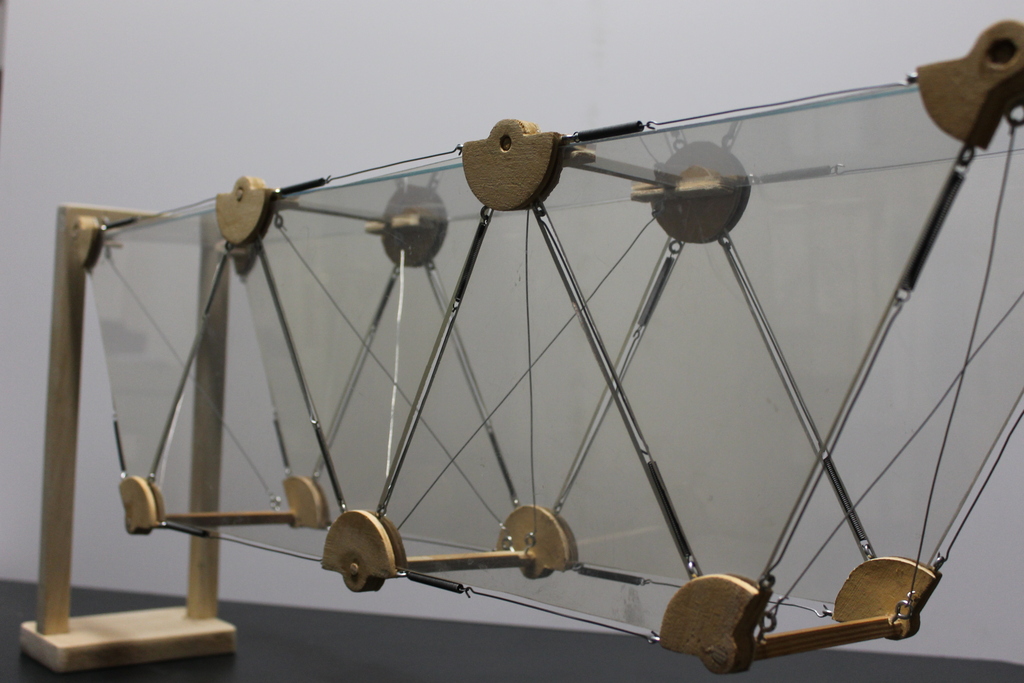Starting from the principle of Tensile Integrity, Maurizio Froli has invented and patented (Patent PI/2006/A/00017) for the University of Pisa a new type of hybrid, prestressed glass-steel beam which is characterized by the absence of holes, bolts or glue in the mechanical inter-connections of the glass panels, that could arise dangerous concentrations of tensile stresses.
The beam has been designed according to the basic requirements of fail-safe design, high transparency, modularity, non-brittle collapse and ductility.
The basic idea was to avoid the initiation and propagation of cracks caused by tensile stresses observed in conventional glass beams subjected to increasing flexural loads, to let glass be submitted essentially to compressive stresses and to allow a easy overcome of the maximum lengths in traditional glass beams.
These results have been obtained by anticipating and piloting cracks with a regular pre-cut pattern of all the glass webs and flanges subdivided in many rectangular and equilateral triangular laminated panels.
The equilateral, triangular geometry of the vertical panels implies that only three different types of steel knots are necessary and also that the dimensions of the knots are invariant within a large range of beam highs.
The high modularity of the whole glass and steel components of the beam has been pursued in order to facilitate and economize the industrial production by reducing production times, amount of scraps and by simplifying assemblage operations.
In case of an accidental rupture of a panel, the segmental nature of the structure allows to replace just the broken component avoiding the complete replacement of the beam.
Glass panels are assembled together just by prestressing longitudinal and diagonal steel bars which push the vertices of the glass panels against steel knots.
Thanks to the post-tensioning of the steel bar system the knots exert only contact reaction pressures on the laminated glass panels.
If the beam is submitted to increasing external loads, when tensile stresses are greater than the pre-stress compressions, the detachment of the glass vertices from the steel knots is allowed and avoids any transfer of tensile stress in the glass.
The global stiffness of the beam and the decompression level can be increased just by exerting bigger prestress forces.
The sequence of damages occurring in the different components has been pre-established by means of a calibrated design in which the yielding of the tensioned steel bars largely precedes the buckling of the compressed glass panes. The collapse of the beam is therefore ductile and characterized by yielding of steel bars accompanied by large displacements.
The experimental prototypes
Until now three TVT prototypes have been successively designed and assembled at the Laboratorio Ufficiale per le Esperienze sui Materiali da Costruzione of the University of Pisa, respectively called TVTα, TVTβ, e TVTγ.


